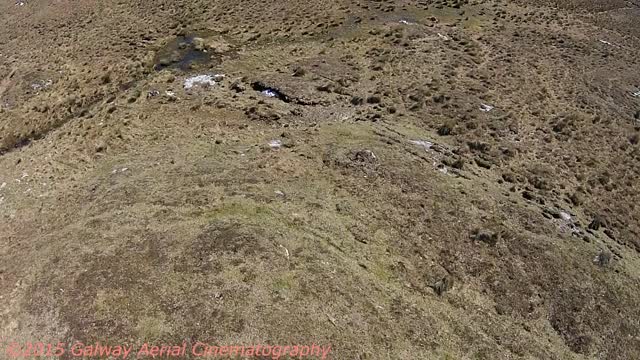Premium Only Content

Aerial View Where Alcock & Brown had Landed In Connemara On A Irish Bog
The first transatlantic flight was achieved in 1919 with the arrival of a Vickers-Vimy biplane behind the Marconi wireless station at Derrigimlagh, 4 kilometres south of Clifden. On-board were two British airmen, Captain John Alcock (pilot), and Lieutenant Arthur Whitten Brown (navigator). The aeroplane had taken off from Lester’s Field in St John’s, Newfoundland at 4:12 p.m. GMT the previous day and arrived at Derrigimlagh, Clifden, County Galway at 8:40 a.m. GMT on Sunday 15th June. The distance covered was a little less than 1,900 miles. The flight time was 16 hours 28 minutes.
The successful flight had won the two fliers a £10,000 prize and a place in aviation history. Competition for the prize was intense and several aircrafts had gathered at St John’s in preparation for the challenge; one attempt had already failed. The average speed during the Atlantic crossing was 120 miles per hour. On takeoff, the Vickers-Vimy carried 865 gallons of petrol and 40 gallons of oil. On arrival at Derrigimlagh, she still carried sufficient fuel for a further ten hours flight. The flyers wore electrically heated clothing, Burberry overalls, fur gloves and fur-lined helmets. The battery for heating their clothing sat between them in the cockpit. They carried with them 300 private letters, the first transatlantic airmail in history.
Crossing the Irish coast, Alcock and Brown spotted the tall masts of the Marconi wireless station at Derrigimlagh. Recognizing their location, Alcock decided not to go any further. Switching off his engines, he glided towards what he thought to be a level stretch of ground behind the station. The wheels touched down and ran on a short distance, before coming to a stop as they sank into the bog. The nose dipped and the tail lifted, and fuel began leaking into the cockpit. The airmen scrambled to safety, stepping onto Irish soil.
-
 0:27
0:27
dk3458
4 years agoCity Aerial View
6112 -
 1:40
1:40
KMGH
4 years agoCentral 70: Aerial view shows changes
16 -
 0:10
0:10
dk3458
4 years ago $0.05 earnedWinter Forest Aerial View
4124 -
 2:38
2:38
WEWS
5 years agoAerial view of Avon protests
26 -
 0:32
0:32
dk3458
4 years ago $0.08 earnedBeautiful Aerial View of a Forest
3912 -
 0:15
0:15
DubaiDXB
5 years agoDubai Marina Aerial View
29 -
 0:27
0:27
KMTV
5 years agoAerial view of flooding
28 -
 13:39
13:39
Digital Trends
5 years agoKaramo Brown Discusses Where To Have Healthy Conversations | Digital Trends Live 6.30.20
168K -
 0:38
0:38
WEWS
5 years agoRAW: AirTracker 5 provides aerial view of flooding
6 -
 1:02
1:02
ViralHog
4 years ago $0.01 earnedCar Landed on Boat
162